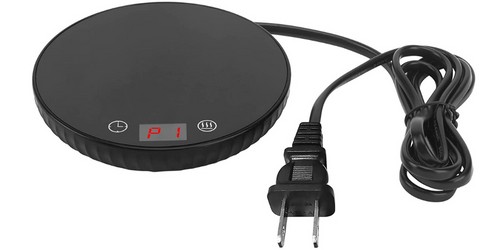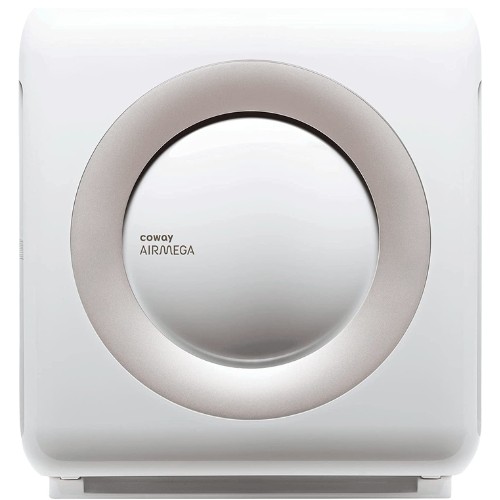Are Mrs. Meyer’s candles safe for pets? Ensuring the well-being of our furry companions is paramount, especially when it comes to the products we use in our homes. At PETS.EDU.VN, we understand that pet owners constantly seek reliable information about pet safety, and we’re here to provide clarity on this crucial topic. This article will delve into the potential risks associated with scented products, specifically Mrs. Meyer’s candles, and offer practical advice on creating a safe and pleasant environment for your beloved animals, enhancing their overall health and happiness. Stay informed about pet care with PETS.EDU.VN.
1. The Power of Scent and Pet Sensitivity
Scents play a significant role in our lives, influencing our moods and behaviors. Statistics show that in 2020, approximately 249.76 million Americans used air freshener sprays and room deodorizers, a number projected to rise. Humans can distinguish about one trillion different odors, while dogs can sense 100 million and cats 200 million. The olfactory area in a dog’s brain is 40 times larger than in humans, and cats can smell about 14 times better than we do.
1.1. Why Scent Sensitivity Matters for Pets
Pets possess a heightened sense of smell, making them more susceptible to the effects of fragrances. Products that might seem harmless to humans can significantly impact our animal companions.
1.2. Potential Health Problems from Scented Products
Studies indicate that scented products can cause health issues in 20% of the human population and 35% of those with asthma. If these products affect humans, imagine the impact on pets with their more sensitive olfactory systems. At PETS.EDU.VN, we believe in informing pet owners about these potential risks so they can make informed decisions.
2. General Guidelines for Scented Products and Pets
Even if a scent or dispensing method is safe for humans, it does not guarantee safety for pets. Cats, in particular, are often more sensitive to the toxic effects of essential oils and other scents compared to dogs. However, this varies depending on the specific scent, delivery method, and the pet’s unique sensitivities. It is crucial to understand these factors to protect your pets.
2.1. Cat vs. Dog Sensitivity
Cats are generally more sensitive to scented products due to their unique physiology. Their livers have difficulty processing certain compounds found in essential oils, leading to potential toxicity. Dogs, while more resilient, can still experience adverse reactions to strong scents.
2.2. Understanding Delivery Methods
The way a scent is dispersed can also affect its impact. Diffusers, candles, and sprays release fragrances into the air, potentially exposing pets to harmful chemicals through inhalation or skin contact.
2.3. Individual Pet Sensitivities
Each pet is unique, and their reaction to scents can vary based on age, breed, and health status. Observing your pet for any signs of discomfort is crucial when introducing new scented products into your home.
3. Deep Dive into Mrs. Meyer’s Candles
Mrs. Meyer’s Clean Day products are popular for their pleasant fragrances and plant-derived ingredients. However, understanding their safety for pets requires a closer look at their composition and potential effects.
3.1. Ingredients in Mrs. Meyer’s Candles
Mrs. Meyer’s candles typically contain a blend of essential oils and fragrance compounds in a soy wax base. While the brand emphasizes natural ingredients, it’s essential to examine each component for potential risks to pets.
3.2. Essential Oils and Pet Toxicity
Certain essential oils, such as tea tree, peppermint, and citrus, can be toxic to pets. These oils can cause a range of symptoms, from skin irritation and gastrointestinal upset to neurological issues. The concentration and method of exposure significantly influence the severity of the reaction.
3.3. Synthetic Fragrances and Chemical Sensitivities
Even “natural” candles often contain synthetic fragrances to enhance the scent or prolong its duration. These synthetic compounds can release volatile organic compounds (VOCs) into the air, which can irritate pets’ respiratory systems. Chemical sensitivities vary among pets, making it challenging to predict how they will react.
4. Potential Risks of Mrs. Meyer’s Candles to Pets
Using Mrs. Meyer’s candles around pets poses several potential risks, primarily due to inhalation of scented particles and the possibility of ingestion.
4.1. Respiratory Irritation
The primary risk is respiratory irritation. Pets with pre-existing conditions like asthma or bronchitis are particularly vulnerable. Inhaling scented particles can exacerbate these conditions, leading to coughing, wheezing, and difficulty breathing.
4.2. Skin Irritation
Direct contact with the wax or melted candle can cause skin irritation, especially in pets with sensitive skin. Some essential oils and fragrance compounds can trigger allergic reactions, resulting in redness, itching, and discomfort.
4.3. Ingestion Hazards
If a pet ingests the candle wax, it can lead to gastrointestinal upset, including vomiting and diarrhea. Some ingredients in the wax, such as certain essential oils, are toxic and can cause more severe health problems.
4.4. Neurological Effects
In severe cases, exposure to certain essential oils can cause neurological effects, such as tremors, incoordination, and seizures. This is more common in cats due to their limited ability to metabolize these compounds.
5. Symptoms of Scent Sensitivity in Pets
Recognizing the signs of scent sensitivity is crucial for preventing serious health issues. Keep an eye out for the following symptoms:
5.1. Respiratory Symptoms
- Coughing
- Wheezing
- Sneezing
- Difficulty breathing
- Rapid or shallow breathing
5.2. Skin-Related Symptoms
- Redness
- Itching
- Hives
- Excessive grooming or licking
5.3. Gastrointestinal Symptoms
- Vomiting
- Diarrhea
- Loss of appetite
- Excessive drooling
5.4. Neurological Symptoms
- Tremors
- Incoordination
- Seizures
- Lethargy
If you notice any of these symptoms in your pet after using Mrs. Meyer’s candles, discontinue use immediately and consult your veterinarian. At PETS.EDU.VN, we stress the importance of early detection and intervention in safeguarding your pet’s health.
6. Safe Alternatives to Mrs. Meyer’s Candles
If you’re concerned about the safety of Mrs. Meyer’s candles, several pet-friendly alternatives can help you create a pleasant-smelling home without compromising your pet’s health.
6.1. Pet-Safe Air Fresheners
Look for air fresheners specifically formulated for use around pets. These products typically use natural ingredients and avoid harsh chemicals and potentially harmful essential oils.
One option is One Fur All non-toxic pet-safe air freshener spray. These are designed to eliminate odors safely without harming your pets.
6.2. Pet Odor-Eliminating Candles
Consider using candles designed to eliminate pet odors without releasing harmful chemicals. The Pet Odor Exterminator candle is a great option. It comes in many scents and works well at eliminating pet odors, as well as other smells. You can buy these candles on Amazon or on Chewy.com.
6.3. Smoke-Free Scented Candle Warming Plates
You can use a jar candle on a warming plate and get the same scented benefit without the smoke or danger of flames around your pets. Choosing a warmer with an automatic shut-off is much safer as well.
6.4. Simmering Aromatics
One common trick is to put on a pot of simmering water and add ingredients such as cinnamon sticks, cloves, vanilla, or mint tea. Avoid using citrus, such as orange and lemon peels, if you know that your cat finds it to be a highly unpleasant smell.
Here are some Simmer Pot Recipes that are safe to use around pets:
| Recipe Name | Key Ingredients | Notes |
|---|---|---|
| Winter Simmer Recipes | Cinnamon, cloves, apple slices | Avoid citrus if your cat is sensitive. |
| Simple Simmer Recipes | Vanilla, mint, rosemary | Ensure pets don’t ingest ingredients. |
| Stovetop PotPourri Recipes | Pine needles, cranberries | Be cautious of potential toxicity from pine; monitor your pet closely for any adverse reactions. |


6.5. DIY Air Freshener
You can make a DIY air freshener using rock salts, organic cloves, medical-grade orange essential oil, and a (pet-safe) fabric softener (this fabric softener from Attitude Little Ones has a Chamoline scent, this one from Mrs. Meyer’s is Honeysuckle, and it comes in Lavender too).
6.6. Natural Fabric Refresher
A natural fabric refresher is Bac-Out Stain & Odor Remover. They use biodegradable ingredients, which are plant-based extracts and enzymes, and there are no artificial fragrances or dyes.
6.7. Air Purifiers
Air purifiers can help clear the air of any lingering odors and smoke. The better ones also help to remove fine particles from the air that could irritate your pet’s lungs. Some of our teammates in Seattle, Washington, use this air purifier, which has greatly helped with the smoke from forest fires.
You can also use bamboo charcoal bags in rooms, closets, cars, etc., to help purify the air.
By choosing these safer alternatives, you can enjoy a fresh-smelling home without putting your pets at risk.
7. Precautions When Using Scented Products
If you decide to use scented products, taking certain precautions can minimize the risks to your pets.
7.1. Ventilation is Key
Ensure good ventilation in the area where you’re using scented products. Open windows and use fans to circulate air and reduce the concentration of airborne particles.
7.2. Limited Exposure
Limit the duration and frequency of use. Avoid using scented products in enclosed spaces where your pet spends a lot of time.
7.3. Keep Products Out of Reach
Store candles, air fresheners, and essential oils out of your pet’s reach to prevent accidental ingestion or contact.
7.4. Monitor Your Pet
Observe your pet for any signs of discomfort or adverse reactions. If you notice any symptoms, discontinue use and consult your veterinarian.
7.5. Consult with Your Veterinarian
If you have concerns about using scented products around your pet, consult with your veterinarian. They can provide personalized advice based on your pet’s specific needs and health status.
8. The Role of PETS.EDU.VN in Pet Safety
At PETS.EDU.VN, we are committed to providing pet owners with the information they need to make informed decisions about their pets’ health and safety. We understand the challenges of navigating the vast amount of information available and strive to offer reliable, evidence-based guidance.
8.1. Expert Articles and Resources
Our website features a wealth of articles and resources on various aspects of pet care, including nutrition, behavior, and health. We collaborate with veterinarians and pet experts to ensure our content is accurate and up-to-date.
8.2. Community Support
We foster a community where pet owners can connect, share experiences, and ask questions. Our forums and comment sections provide a platform for discussing pet-related issues and seeking advice from fellow pet lovers.
8.3. Personalized Recommendations
We offer personalized recommendations based on your pet’s unique needs. Whether you’re looking for advice on choosing the right food or finding a pet-friendly product, our team is here to help.
9. Additional Scented Products to Be Cautious Of
Beyond Mrs. Meyer’s candles, it’s crucial to be mindful of other scented products in your home that could pose a risk to your pets. Being aware of these potential hazards allows you to take preventive measures and ensure a safer environment for your furry friends.
9.1. Essential Oils
Essential oils are widely used for their therapeutic properties and pleasant fragrances. However, they can be highly toxic to pets if ingested or absorbed through the skin.
Risks:
- Ingestion: Can cause gastrointestinal upset, liver damage, and neurological issues.
- Topical Application: Can lead to skin irritation and systemic toxicity.
- Inhalation: Diffused essential oils can irritate the respiratory tract.
Safe Practices:
- Keep essential oils out of reach of pets.
- Use diffusers in well-ventilated areas and limit exposure.
- Never apply undiluted essential oils directly to your pet’s skin.
- Consult with a veterinarian before using essential oils around pets.
9.2. Potpourri
Potpourri, whether dry or liquid, can be hazardous to pets. Dry potpourri can cause irritation if ingested, while liquid potpourri contains essential oils and cationic detergents that are particularly dangerous.
Risks:
- Dry Potpourri: Can cause choking, digestive upset, or obstruction.
- Liquid Potpourri: Contains essential oils and cationic detergents that can cause corrosive burns, ulcers, and organ damage.
Safe Practices:
- Keep potpourri out of reach of pets.
- Clean up spills immediately to prevent ingestion.
- Consider using safer alternatives for home fragrance.
9.3. Air Fresheners (Including Pine Sprays)
Many commercial air fresheners contain volatile organic compounds (VOCs) that can be harmful to pets. Even “green” or “organic” air fresheners may contain undisclosed chemicals that pose health risks.
Risks:
- VOCs: Can cause eye, nose, and throat irritation, headaches, and damage to the liver, kidney, and central nervous system.
- Asthma Triggers: Can trigger asthma or coughing attacks in susceptible pets.
- Plug-in Hazards: Pets may chew on plug-in air fresheners, leading to ingestion of harmful oils or electrical shock.
Safe Practices:
- Choose pet-friendly air fresheners with natural ingredients.
- Ensure good ventilation when using air fresheners.
- Keep plug-in air fresheners out of reach of pets.
9.4. Incense
Burning incense releases smoke and aromatic compounds that can irritate pets’ respiratory systems. Pets with pre-existing respiratory conditions are particularly vulnerable.
Risks:
- Smoke Inhalation: Can cause sneezing, congestion, watery eyes, and exacerbate respiratory issues.
- Aromatic Compounds: Can lead to the same problems as essential oils and other scented products.
Safe Practices:
- Burn incense in a room inaccessible to pets.
- Ensure adequate ventilation.
- Use air purifiers to remove smoke and particles from the air.
9.5. Cleaning Products
Many household cleaning products contain harsh chemicals that can be harmful to pets if ingested or inhaled.
Risks:
- Ingestion: Can cause gastrointestinal upset, chemical burns, and organ damage.
- Inhalation: Can irritate the respiratory tract and cause coughing or wheezing.
- Skin Contact: Can lead to skin irritation and chemical burns.
Safe Practices:
- Choose pet-friendly cleaning products with natural ingredients.
- Keep cleaning products out of reach of pets.
- Ensure good ventilation when cleaning.
- Rinse surfaces thoroughly after cleaning to remove residue.
9.6. Laundry Detergents and Fabric Softeners
Many laundry products contain fragrances and chemicals that can irritate pets’ skin or respiratory systems.
Risks:
- Skin Contact: Can cause skin irritation and allergic reactions.
- Inhalation: Can irritate the respiratory tract and trigger coughing or wheezing.
- Ingestion: Can cause gastrointestinal upset if pets lick or chew on treated fabrics.
Safe Practices:
- Choose fragrance-free and dye-free laundry products.
- Use pet-friendly detergents and fabric softeners.
- Rinse laundry thoroughly to remove residue.
- Store laundry products out of reach of pets.
10. Frequently Asked Questions (FAQ) About Scented Products and Pet Safety
Q1: Are all essential oils harmful to pets?
Not all essential oils are harmful, but many can be toxic if ingested, applied topically, or inhaled in high concentrations. Common offenders include tea tree oil, peppermint, and citrus oils. Always consult with your veterinarian before using essential oils around pets.
Q2: What are the signs of essential oil poisoning in pets?
Symptoms of essential oil poisoning in pets include vomiting, diarrhea, drooling, tremors, difficulty breathing, and incoordination. If you suspect your pet has been poisoned, contact your veterinarian or an animal poison control center immediately.
Q3: Is Febreze safe to use around pets?
The ASPCA Animal Poison Control Center has reviewed Febreze fabric freshener products and found them safe for use around pets when used according to label instructions. However, aerosol air fresheners can still pose risks due to inhalation of chemicals.
Q4: Can I use a diffuser around my cat?
Using a diffuser around cats requires caution. Ensure the diffuser is used in a well-ventilated area, and limit the duration of exposure. Avoid using essential oils known to be toxic to cats, such as tea tree oil and peppermint.
Q5: What are some pet-safe alternatives to scented candles?
Pet-safe alternatives to scented candles include pet odor-eliminating candles, smoke-free candle warming plates, simmering aromatics, DIY air fresheners, and natural fabric refreshers.
Q6: How can I eliminate pet odors without using scented products?
You can eliminate pet odors by regularly cleaning litter boxes, using air purifiers, and ensuring good ventilation. Baking soda can also be used to absorb odors in carpets and upholstery.
Q7: Are plug-in air fresheners safe for pets?
Plug-in air fresheners can be hazardous to pets if they chew on them, leading to ingestion of harmful oils or electrical shock. Keep plug-in air fresheners out of reach of pets and consider using safer alternatives.
Q8: Can incense harm my pet?
Burning incense releases smoke and aromatic compounds that can irritate pets’ respiratory systems. It’s best to burn incense in a room inaccessible to pets and ensure good ventilation.
Q9: What should I do if my pet ingests candle wax?
If your pet ingests candle wax, monitor them for any signs of gastrointestinal upset, such as vomiting or diarrhea. Contact your veterinarian if symptoms persist or worsen.
Q10: How can I make my home smell good without harming my pets?
You can make your home smell good without harming your pets by using pet-safe air fresheners, simmering aromatics, DIY air fresheners, and ensuring good ventilation. Regular cleaning and air purification can also help eliminate odors.
11. Conclusion: Prioritizing Pet Safety
While Mrs. Meyer’s candles may offer appealing scents, it’s essential to consider the potential risks they pose to your pets. Prioritizing pet safety involves understanding the ingredients in scented products, recognizing symptoms of sensitivity, and choosing safer alternatives. At PETS.EDU.VN, we are dedicated to providing you with the knowledge and resources you need to create a healthy and happy home for your beloved animals.
Remember, being informed and proactive is key to protecting your pets from harm. If you have any concerns or questions, don’t hesitate to reach out to your veterinarian or contact us at PETS.EDU.VN. We’re here to support you every step of the way.
For more detailed information on pet care and safety, visit our website at PETS.EDU.VN or contact us at 789 Paw Lane, Petville, CA 91234, United States. You can also reach us via Whatsapp at +1 555-987-6543.
Discover more ways to create a safe and loving environment for your furry friends with pets.edu.vn today! Your pet’s health and happiness are our top priority.
